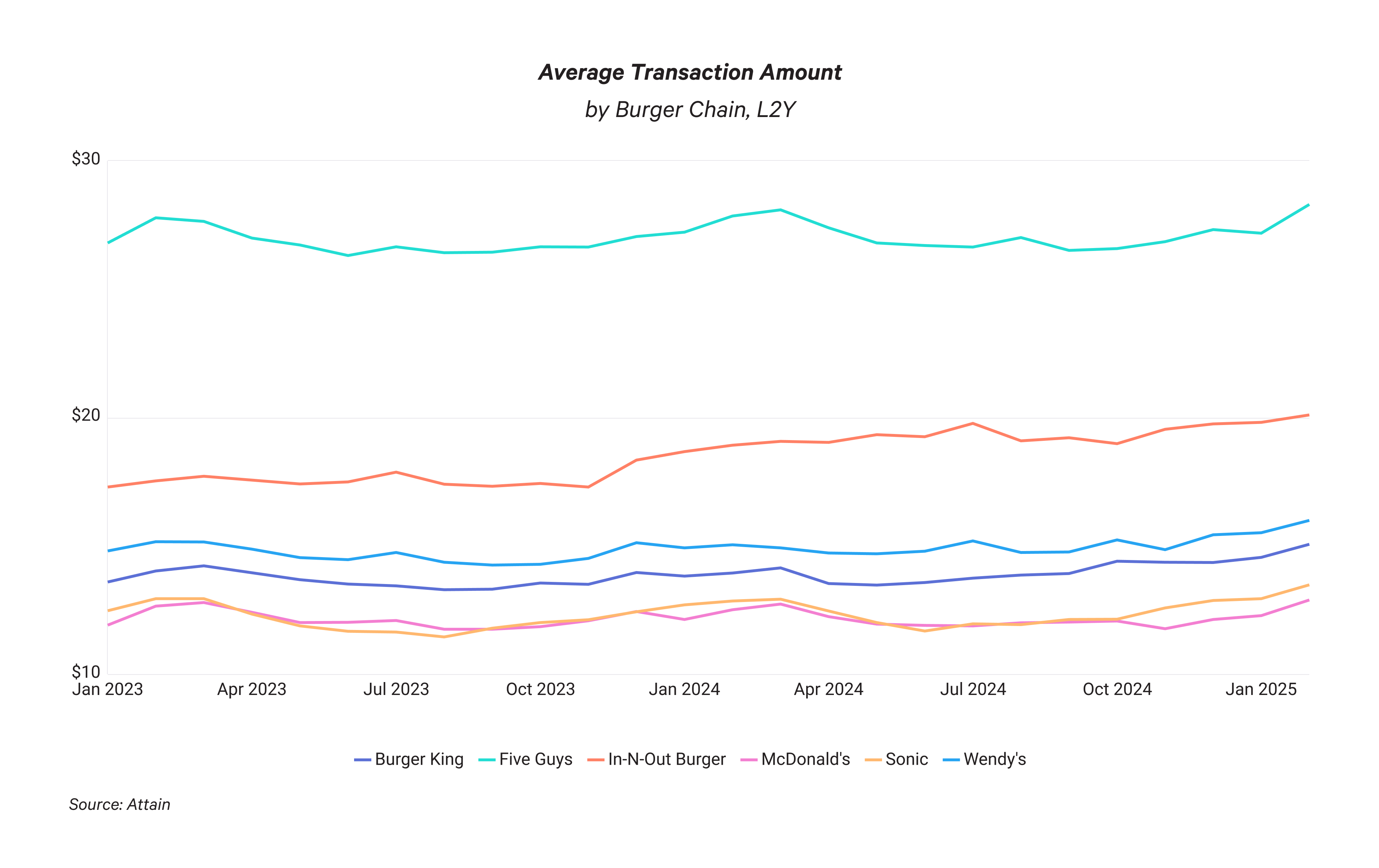$(function() {
$('inputfield').on('keypress', function(e){
if(e.keyCode == '13'){
// enter pressed
e.preventDefault();
$('.search-button').trigger('click');
}
});
});

Major fast food burger chains have brought back their value meals, yet another indicator that consumers are more budget-conscious amid sticky inflation.
McDonald’s expanded its signature McValue menu at the beginning of this year, allowing diners to buy one item from the McValue menu at full price and get another item on that menu for just $1 more. The move built upon the $5 Meal Deal that McDonald’s introduced in June 2024, a deal that McDonald’s will continue to offer through this summer.
McDonald’s returning to a value-based marketing message has precipitated all the big burger chains to emphasize their low prices. Burger King responded to McDonald’s last summer with its $5 Your Way Meal, and Wendy’s announced its $5 Biggie Bag shortly thereafter. Taco Bell doesn’t sell burgers, but it, too, has embraced a low-cost promotion: the $5 Discovery Box Deal. Not to be outdone, Subway reduced the price of its footlong subs to $6.99.
These marketing messages are just the latest sign that consumers remain judicious about spending in the face of high prices and an uncertain economy — a recurring theme in The Outcome’s coverage.
From holiday shopping season to spring break travel, consumers have consistently shown some apprehension in their spending habits, likely due to the high prices caused by the historic inflation rate during the pandemic. For awhile last year, dining out was the one arena where consumers seemed immune to inflation concerns. But inflation seems to have finally caught up with diners, at least when it comes to fast food.
The value deals appear to be working in terms of convincing consumers to continue to dine out at fast food joints. A data analysis conducted by the purchase platform Attain shows that the average transaction amounts for the major burger chains have stayed steady over the past two years. For In-N-Out Burger, the average transaction amount has actually increased.

The return of the value menus harken back to the 2000s, when value was a mainstay of fast food marketing. Subway’s entire marketing strategy during this period revolved around its $5 Footlong sandwich. McDonald’s ran a TV commercial about Dollar Menunaires about the lifestyle of the frugal and ordinary who bought items from its $1 value menu.
Somewhere, there’s an elder millennial shaking his fist at the clouds, screaming about how lunch used to cost five dollars.
McDonald’s continuing its promo through the summer is an indicator that people’s financial anxieties will not be assuaged in the immediate future. With egg and chicken prices soaring due to avian flu, the stock market fluctuating wildly, pesky inflation and uncertainty about the short- and long-term effects of the Trump Administration’s tariff policy, consumer sentiment plunged in March to its lowest level since November 2022.
“Last year inflation was a big concern,” says David Berkowitz, a long-time ad industry veteran and founder of the AI Marketers Guild. “All the added degrees of uncertainty are piling up. So quick-service restaurants, like everyone else not selling luxury goods, need to double down on value.”